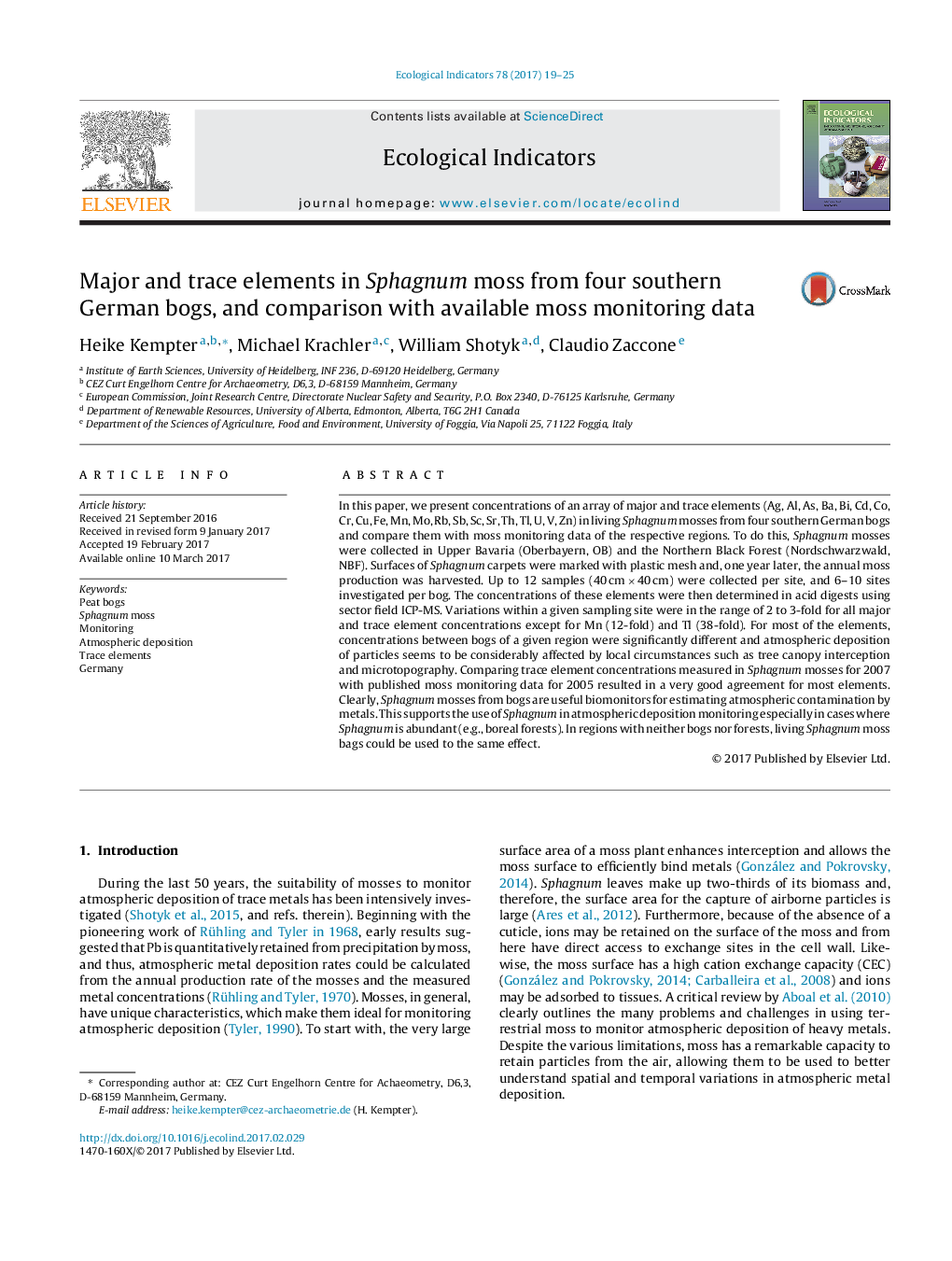| Article ID | Journal | Published Year | Pages | File Type |
|---|---|---|---|---|
| 5741609 | Ecological Indicators | 2017 | 7 Pages |
â¢Within a bog, element concentrations in Sphagnum moss show limited variation.â¢Five replicate samples from five sites within a peat bog are recommended.â¢For most elements, concentrations in Sphagnum agree well with moss monitoring data.â¢Sphagnum is useful for monitoring spatial and temporal variations in atmospheric deposition.â¢Soil-derived mineral dusts are the single most important source of trace metals today.
In this paper, we present concentrations of an array of major and trace elements (Ag, Al, As, Ba, Bi, Cd, Co, Cr, Cu, Fe, Mn, Mo, Rb, Sb, Sc, Sr, Th, Tl, U, V, Zn) in living Sphagnum mosses from four southern German bogs and compare them with moss monitoring data of the respective regions. To do this, Sphagnum mosses were collected in Upper Bavaria (Oberbayern, OB) and the Northern Black Forest (Nordschwarzwald, NBF). Surfaces of Sphagnum carpets were marked with plastic mesh and, one year later, the annual moss production was harvested. Up to 12 samples (40 cm Ã 40 cm) were collected per site, and 6-10 sites investigated per bog. The concentrations of these elements were then determined in acid digests using sector field ICP-MS. Variations within a given sampling site were in the range of 2 to 3-fold for all major and trace element concentrations except for Mn (12-fold) and Tl (38-fold). For most of the elements, concentrations between bogs of a given region were significantly different and atmospheric deposition of particles seems to be considerably affected by local circumstances such as tree canopy interception and microtopography. Comparing trace element concentrations measured in Sphagnum mosses for 2007 with published moss monitoring data for 2005 resulted in a very good agreement for most elements. Clearly, Sphagnum mosses from bogs are useful biomonitors for estimating atmospheric contamination by metals. This supports the use of Sphagnum in atmospheric deposition monitoring especially in cases where Sphagnum is abundant (e.g., boreal forests). In regions with neither bogs nor forests, living Sphagnum moss bags could be used to the same effect.
